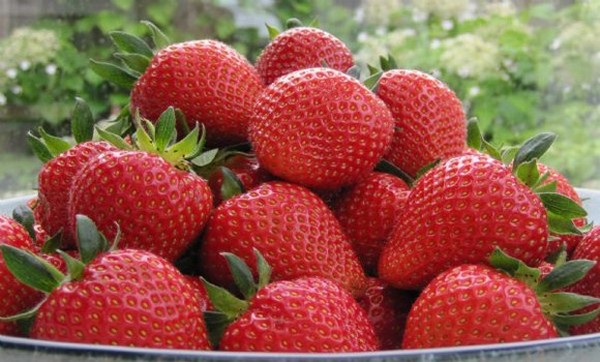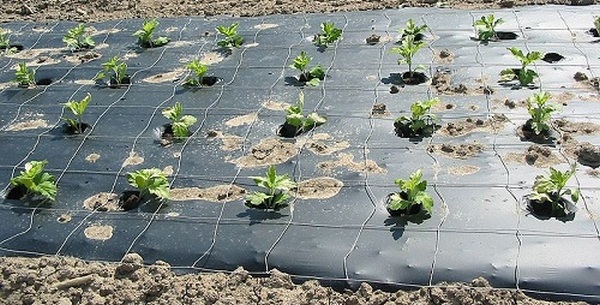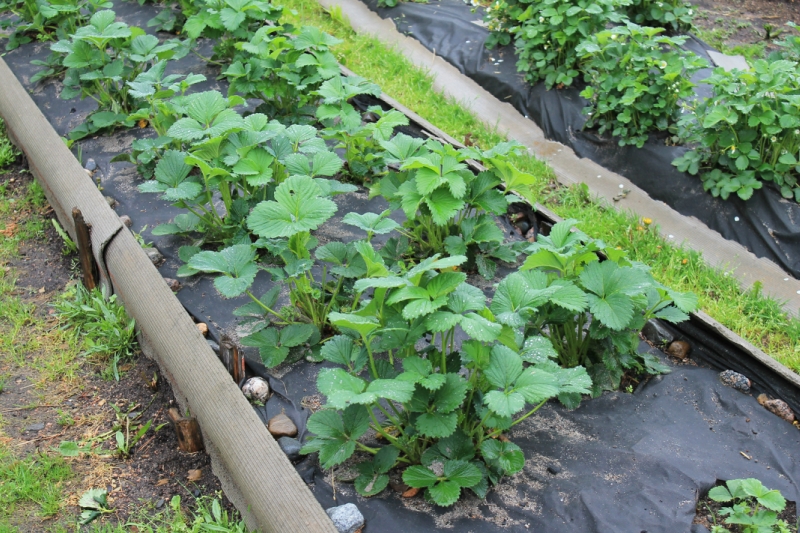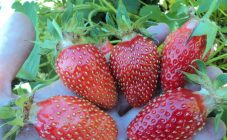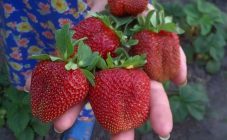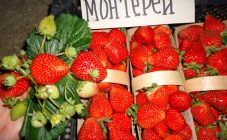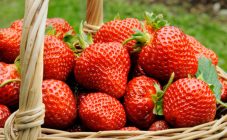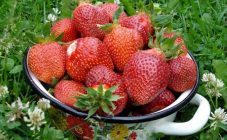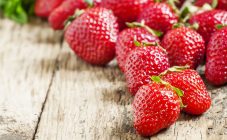Content:
There are many varieties of strawberries and strawberries. One of the most successful berry crops of modern breeding is considered to be a young and still little-known variety of the remontant strawberry San Andreas. It was bred by Californian scientists on the basis of the Albion variety and is already considered a higher class crop.
Strawberry San Andreas: variety description
San Andreas strawberries are intended for regions with hot summers. Under these conditions, it is capable of producing up to 4 crops per season. This strawberry type is neutral to day length. In late summer, when the number of daytime hours decreases, remontant strawberries continue to bloom and form ovaries. The extended fruiting period for the San Andreas variety lasts from May to the end of October. In regions with an arid climate in the middle of summer, the plant has a slight decline in activity. Productivity is reduced due to lack of moisture. To prevent the strawberry bushes from drying out, you need to plant tall crops next to them or arrange mesh sheds over the berry beds.
Berries of the San Andreas variety have the following characteristics:
- dense rind, colored bright red;
- oblong shape with a rounded tip;
- red-orange tint at the pulp;
- sweet taste with sourness.
Fruit weight ranges from 30 to 50 g. Light yellow seeds are slightly sunk into the peel and are evenly distributed throughout the berry.
The bushes of this strawberry variety have:
- medium size with a small amount of light green foliage;
- powerful root system;
- a large number of peduncles (from 5 to 10 pieces).
Strawberry bushes of this variety form a small number of tendrils. Thanks to this feature, the gardener saves a significant amount of time on removing unnecessary outlets.
This strawberry is considered by gardeners as a plant with an average yield. With good care for the season, from one bush you can collect from 500 to 1000 g of fruits. Berries on tall stalks ripen without touching the ground, so strawberries are less prone to rotting. The resulting crop has a good marketable appearance. Collecting San Andreas strawberries is convenient, you do not need to look for them, picking up each leaf.
Conditions for good growth
The San Andreas cultivar was bred in the hot climates of California, so this horticultural crop requires similar growing conditions. The plant will feel great and bear fruit in any of the southern regions of Russia.
In order for this horticultural culture to actively bear fruit throughout the season, the bushes need to be fed regularly. Strawberries growing on impoverished soils especially need fertilizers:
- loamy;
- sandy.
Growing and care
It is recommended to plant strawberries in two lines with an interval of 25-30 cm between seedlings. Row spacing should be mulched:
- corn leaves;
- straw;
- black agrofilm.
Young strawberry seedlings should be fed 1 month after planting. Then fertilizers are applied to the soil every 10-14 days.
Before flowering, you can enrich the soil with ready-made mineral fertilizers, but with the onset of ovary formation, the plants are fed only with organic matter.
Seedlings begin to be planted in the beds after the onset of a stable air temperature. San Andreas is a thermophilic variety and does not tolerate frost well. In the Krasnodar Territory, garden crops can be planted as early as April, in the Voronezh Region, spring comes about 2-3 weeks later.
No special manipulations are required for the successful cultivation of this strawberry variety. All care is built according to the standard scheme. San Andreas strawberries, like other varieties, need to be watered and fed in a timely manner. Loosen the soil the next day after watering. To reduce the amount of labor, the gaps between the berry bushes are covered with mulching film. Beds covered with mulch do not need to be weeded and loosened. In areas covered with a film, moisture is better retained, useful substances are more efficiently consumed.
In especially hot regions, it is recommended to cover strawberry beds with black and white mulch film. The white outer layer should partially reflect the sun's rays and regulate the soil temperature, preventing overheating of the plant root system.
Strawberries are planted next to tall crops or must be covered with a net for the period from June to August in hot and arid regions:
- Krasnodar Territory;
- Stavropol Territory;
- Volgograd region;
- The Astrakhan region;
- in the Salsky district of the Rostov region.
Combined beds
The best neighboring crop for strawberry bushes is parsley. The fragrant grass scares away snails and slugs.
Also, good neighbors for strawberries can be:
- carrot,
- radish,
- radish,
- beet.
Good-neighborly relations develop in strawberry bushes and legumes growing on trellises or supports. Peas and beans provide light shading to keep the strawberries out of direct sunlight. In addition, peas saturate the soil with essential nutrients. After the legumes are harvested, the leftovers from these plants can be used to mulch the row spacings. Beans ripen later than peas, so in hot climates it is more profitable to plant this plant next to remontant varieties of berries, which will be protected for longer by curly lashes.
Can't be planted close to strawberries:
- tomatoes,
- potatoes,
- bell pepper,
- sunflower.
Top dressing
The beds are prepared in advance before planting strawberries. After harvesting the remnants of fruitful crops in the garden, they are evenly scattered:
- compost,
- ash,
- manure.
In addition to organic fertilizers in the fall, mineral complexes are introduced into the soil, containing:
- nitrogen,
- potassium,
- phosphorus.
The soil is dug so that organic matter and chemicals scattered over the surface of the beds are covered with a layer of earth 10 cm thick or more. Then the soil is enriched a few days before planting seedlings of horticultural crops.
The beds can be watered with vermicompost or saltpeter can be added to the soil. It is not forbidden to use complex fertilizers. Specialized stores sell products that contain all the substances necessary for strawberries. Their content corresponds to the required standard.
After the ovary begins to form on the strawberries, fertilizing with fertilizers of synthetic origin stops.From May to October, strawberry bushes are fed with infusions and solutions of organic substances.
Watering
Young seedlings are watered immediately after planting from a spray bottle or water is poured under the root using a drip irrigation system. Fortified bushes can be watered by spraying water from a hose.
Strawberries do not tolerate wetland, so watering is carried out as the soil surface dries. At the same time, it is unacceptable that the soil in the beds turns into stone and cracks.
Advantages and disadvantages of the variety
Like any varietal plant, the San Andreas strawberry has its advantages and disadvantages. Gardeners consider her positive qualities:
- large berries with a good presentation;
- stable immunity of strawberry bushes to common infectious diseases (gray rot, anthracnose);
- long fruiting period from May to October inclusive;
- high productivity;
- the ability of the fruit to maintain quality for a long time and not deteriorate;
- transportability of berries.
Disadvantages:
- With intensive fruiting, repair strawberries begin to degenerate, the fruits become very shallow for 4-5 years. For this reason, new seedlings need to be planted every 3-4 seasons.
- This cultivated plant will not bear fruit well without regular maintenance.
In any case, this variety is worthy of planting in a summer cottage, but only in the south of Russia. This is a significant nuance in growing strawberries, since gardeners in another region will not have problems with it. It will have to be covered for the winter, the beds should be ventilated in the spring, and much more fertilized in the summer!
